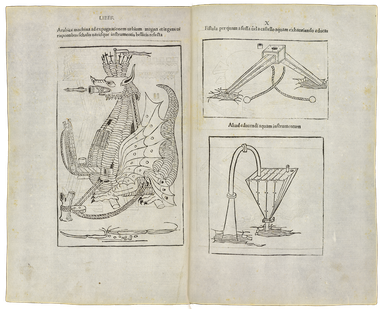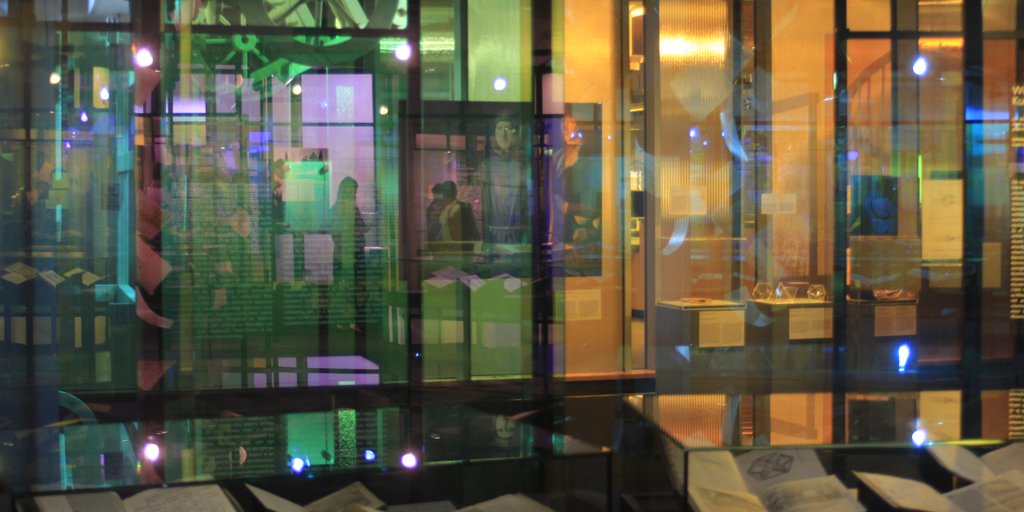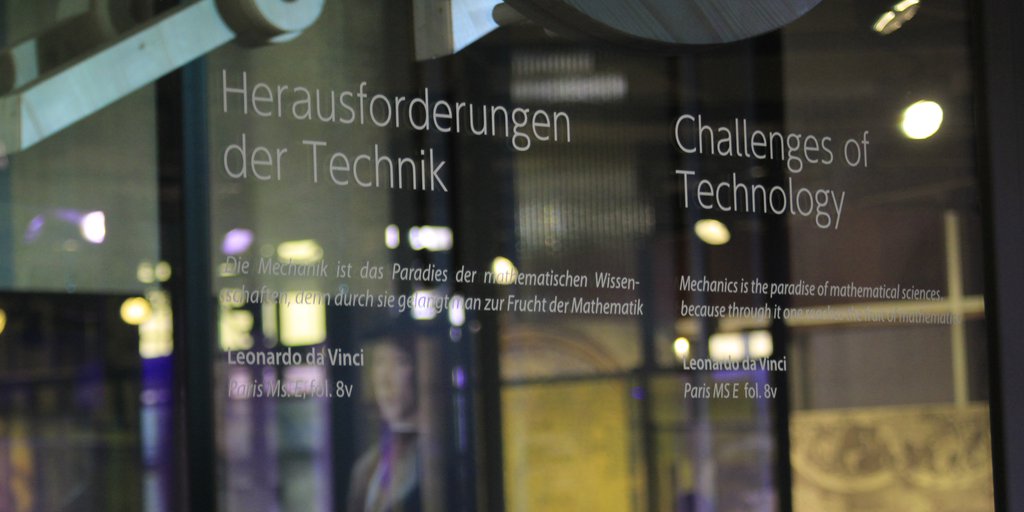
Challenges of Technology <
Mechanics is the paradise of mathematical sciences,
because through it one reaches the fruit of mathematics
Leonardo da Vinci
Paris MS E, fol. 8v. Translation: Elizabeth Hughes
Leonardo was able to develop his technical understanding and knowledge from an early age as an apprentice in the workshop of the gifted painter, sculptor, and goldsmith Andrea del Verrocchio, an expert in various artistic techniques and materials. Leonardo admired the machines that Filippo Brunelleschi had developed for the construction of the dome of the Florence Cathedral. (The copper sphere of the dome lantern that Leonardo later referred to in his writings was made in the Verrocchio workshop.) When Leonardo moved to Milan in 1482, where he had successfully applied for a permanent position at the Sforza court, primarily as a military engineer, he deepened his technical knowledge in many areas. An ambitious autodidact, he studied contemporary specialist technical literature and became a prototype of the artist-engineer. Two predecessors who particularly impressed him were Mariano di Jacopo Taccola (1382–1458) and Francesco di Giorgio Martini (1439–1501), both from Siena. The latter, like Leonardo, was a versatile artist-engineer in court service. Leonardo’s technical interests were fundamentally influenced by the extensive writings of Roberto Valturio (1405–1475), which belonged to his library. Leonardo’s wide-ranging interests, his love of experimentation, and his power of imagination, but not least his outstanding skills as a draftsman, soon enabled him to surpass his role models and opened up previously unknown possibilities in the visualization of technical relationships.
Leonardo's Berlin Library: Section 7 <
 | 63.
De re militari Verona: Boninus de Boninis, 1483 |

De re militari by the humanist Roberto Valturio (1405–1475) from Rimini is a treatise on the art of war mostly based on the writings of authors from antiquity. The many woodcut illustrations of weapons and war machines inspired Leonardo to make his own, far more precise engineering drawings (113 ▲). He also used the text to compile vocabulary lists in the Codex Trivulzianus (108 ▲). The double page here shows an Arab siege machine, apparently made of basketwork and in the form of a fearsome dragon, loading a complement of men as well as military equipment like bridges, ladders, and artillery. On the right-hand side are two devices for draining water from moats.
References
Bambach, Carmen C. 2019. Leonardo da Vinci Rediscovered. Vol. 2: The Maturing of a Genius 1485–1506. 4 vols. New Haven / London: Yale University Press, 134–178.
McLean, Bobby Eon. 2019. In Leonardo’s Library. The World of a Renaissance Reader, edited by Paula Findlen. Stanford, CA: Stanford Libraries, 171 f., no. 41.
Valturio, Roberto. 2006. De re militari. Umanesimo e arte della guerra tra Medioevo e Rinascimento. Edited by Paola Delbianco. Rimini: Guaraldi.
Vecce, Carlo, ed. 2019. Leonardo and His Books. The Library of the Universal Genius. Exhibition catalogue Museo Galileo, Florence, 6.6.–22.9.2019. Florence: Giunti, 93, no. 6.1, 6.2.










